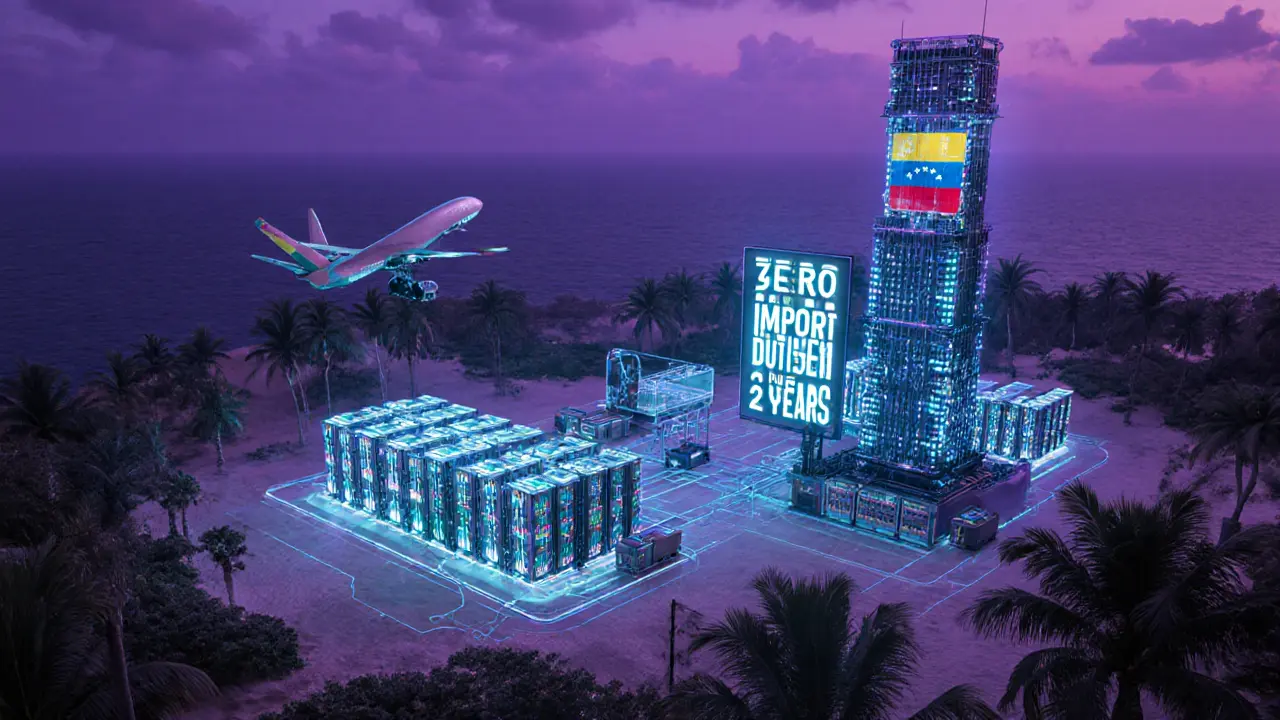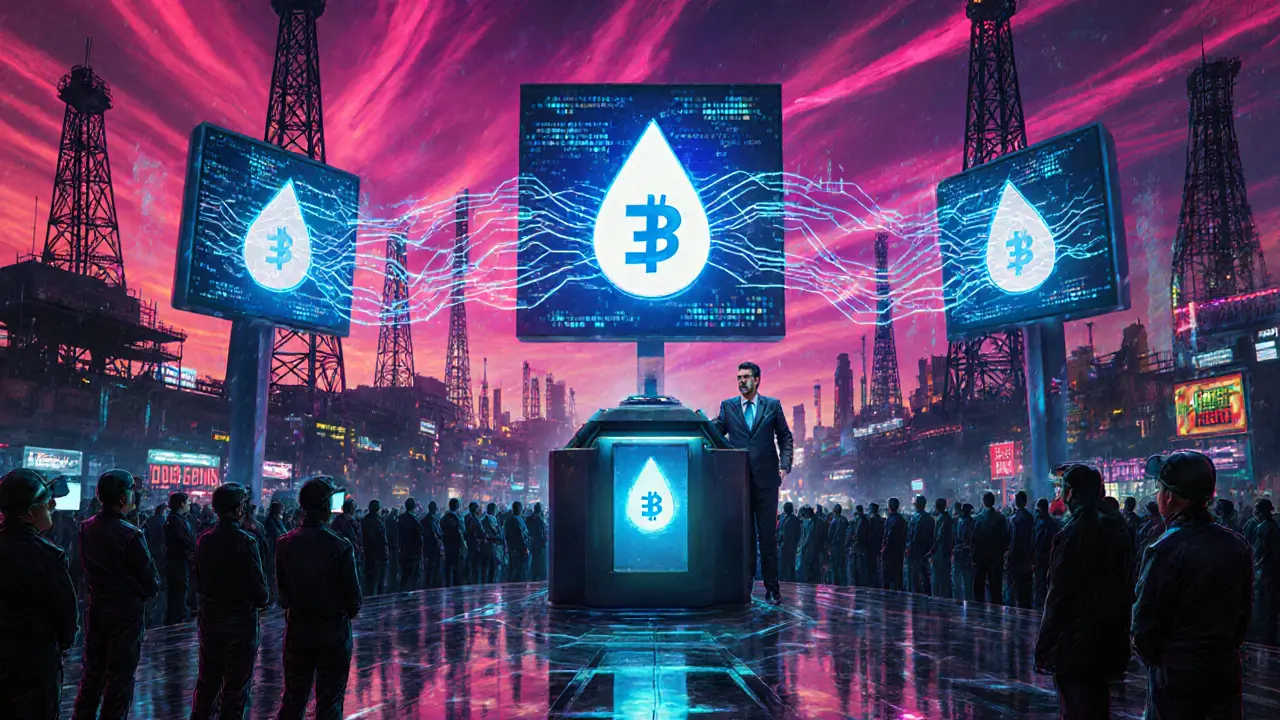Petro Cryptocurrency Analysis Tool
About the Petro
The Petro (PTR) is a government-issued cryptocurrency backed by Venezuela's oil, gas, gold, and diamond reserves. It was introduced in 2017 as an alternative to the bolívar amid economic crisis.
Global Comparison
Unlike Bitcoin and stablecoins, the Petro lacks international recognition and is heavily restricted due to U.S. sanctions. It operates primarily in a controlled environment within Venezuela.
| Feature | Petro (PTR) | Bitcoin (BTC) | US-Dollar Stablecoin (USDT/USDC) |
|---|---|---|---|
| Issuing Authority | Venezuelan government | Decentralized network | Private companies (Tether, Circle) |
| Backing | Oil, gas, gold, diamonds (state reserves) | None (proof-of-work) | 1 USD per token (reserve assets) |
| Legal Status | Contested domestically; sanctioned internationally | Legal in most jurisdictions | Regulated as money-market instruments in many countries |
| Market Accessibility | Not listed on major exchanges | Listed globally (Coinbase, Binance, etc.) | Widely listed and liquid |
| Use Cases in Venezuela | Government fees, aviation fuel, limited commerce | Store of value, remittances, speculative trading | Shopping, payroll, cross-border payments |
- Heavy U.S. sanctions restrict global adoption
- Lack of transparency in mining operations
- Limited acceptance in private markets
- Legal disputes between branches of government
- Verify wallet addresses on official registry
- Avoid U.S. persons dealing with Petro due to sanctions
- Consider converting to widely accepted crypto for liquidity
- No guarantee of official backing claims
Venezuela rolled out a state‑run crypto called the Petro cryptocurrency as a way to sidestep sanctions and shore up its collapsing economy. But after eight years of pilots, zones, and mandatory payments, the token remains more a political tool than a popular digital cash. This guide walks you through what the Petro actually is, how the government program is structured, the legal battles it has sparked, and why everyday Venezuelans are still reaching for Bitcoin instead.
Key Takeaways
- The Petro (PTR) is a government‑issued crypto claimed to be backed by oil, gas, gold and diamonds.
- Four "Petro Zones" were created to attract miners with tax breaks, yet transparent mining data is scarce.
- U.S. sanctions and domestic opposition have kept the token off major exchanges and limited its real‑world use.
- Mandatory Petro payments apply only to a handful of government services and aviation fuel.
- Future viability hinges on Venezuela’s economic recovery, sanctions relief, and genuine market demand.
What Is the Petro and How Is It Supposed to Work?
Petro is a sovereign cryptocurrency issued by the Bolivarian Republic of Venezuela and allegedly backed by the country’s oil, gasoline, gold, and diamond reserves. It was unveiled by Nicolás Maduro on December 3, 2017 as part of Presidential Decree 3196.
The official narrative: each Petro token represents a claim on a barrel of oil or an ounce of gold, giving the state a new way to attract foreign financing without using the bolívar. In theory, the token can be exchanged for goods, services, or fiat money, and it operates on a federated blockchain that lets the government control who validates transactions.
Government Infrastructure Behind the Petro
Several state bodies were created to manage the token:
- SUPCACVEN (Venezuelan Superintendence of Crypto Assets) oversees issuance, miner registries, and fee collection.
- The Cryptoassets Constituent Decree grants the executive branch power to regulate all crypto activities, including the Petro.
- A state‑owned Treasury of Cryptoassets handles custody and distribution of the tokens.
In March 2018, President Maduro announced four Petro Zones-Margarita Island, Los Roques, Paraguaná, and the Ureña‑San Antonio border area. These zones promise tax exemptions on imported mining equipment for two years, hoping to turn Venezuela into a crypto‑mining hub.

Legal and Political Roadblocks
The opposition‑controlled National Assembly declared the Petro illegal just a month after its launch, calling it an “illegal debt issuance”. Meanwhile, the United States has imposed layered sanctions targeting any entity that facilitates Petro transactions, effectively cutting the token off from global exchanges.
One leaked advisory from the government‑appointed group VIBE suggested selling $2.3billion of Petro tokens at discounts up to 60% in a private placement-a clear sign that even insiders doubted the official $60‑per‑token valuation.
These political frictions mean the Petro sits in a legal gray zone: technically a state‑issued asset, but lacking recognition from the legislature, major banks, and international regulators.
Adoption on the Ground: What Venezuelans Actually Use
Mandates require Petro payments for certain government documents and aviation fuel, yet the token’s presence in everyday markets is minimal. Citizens facing hyperinflation have gravitated toward established cryptocurrencies like Bitcoin and stablecoins pegged to the U.S. dollar, because those assets can be traded on global platforms.
Reports from 2023‑2024 indicate that mining activity in the Petro Zones remains opaque; no independent audits have confirmed the volume of Petro generated, and the promised tax incentives have not translated into a measurable boost in local economies.
Comparing Petro to Global Counterparts
| Feature | Petro (PTR) | Bitcoin (BTC) | US‑Dollar Stablecoin (USDT/USDC) |
|---|---|---|---|
| Issuing Authority | Venezuelan government | Decentralized network | Private companies (Tether, Circle) |
| Backing | Oil, gas, gold, diamonds (state reserves) | None (proof‑of‑work) | 1USD per token (reserve assets) |
| Legal Status | Contested domestically; sanctioned internationally | Legal in most jurisdictions | Regulated as money‑market instruments in many countries |
| Market Accessibility | Not listed on major exchanges | Listed globally (Coinbase, Binance, etc.) | Widely listed and liquid |
| Use Cases in Venezuela | Government fees, aviation fuel, limited commerce | Store of value, remittances, speculative trading | Shopping, payroll, cross‑border payments |
The table highlights why the Petro struggles to compete: lack of exchange listings, heavy sanctions, and a forced adoption model that runs counter to the voluntary nature of crypto adoption worldwide.

Current Status in 2025 and What Lies Ahead
As of October 2025, the Petro remains a niche instrument used mainly for mandatory government transactions. The four Petro Zones continue to offer tax breaks, but no transparent data proves that mining has generated significant economic lift.
Two forces will decide the token’s fate:
- Economic recovery: If Venezuela stabilizes its inflation and renegotiates foreign debt, the need for a state‑issued digital token could wane.
- Sanctions landscape: Any loosening of U.S. sanctions would open the door to international exchanges, potentially boosting liquidity and user confidence.
Until then, the Petro will likely stay a political showcase rather than a genuine cryptocurrency that rivals Bitcoin or stablecoins.
Practical Tips If You Encounter the Petro
- Verify the wallet address on the official SUPCACVEN registry before sending any funds.
- Expect steep discount prices if you manage to buy tokens through private sales; market pricing is not transparent.
- Be aware that U.S. persons are prohibited from dealing with the Petro under existing sanctions.
- Consider converting any Petro holdings to a widely accepted crypto (e.g., Bitcoin) as soon as possible to avoid liquidity traps.
Frequently Asked Questions
Is the Petro actually backed by oil?
The government says each token is linked to a barrel of oil or an ounce of gold, but there is no public audit confirming the exact reserve allocation. Independent experts have called the claim “unverified”.
Can I use Petro to buy everyday goods?
In practice, only a few government offices accept Petro for fees, and some airlines allow it for fuel purchases. Private merchants rarely accept it because of exchange risk and sanctions.
What are the tax implications of mining Petro in the zones?
Mining equipment imported into Petro Zones enjoys a two‑year exemption from import duties. However, any revenue generated is subject to a 15% levy collected by SUPCACVEN.
Is the Petro legal for Venezuelan citizens?
The opposition‑controlled National Assembly declared it illegal, but the executive branch continues to enforce its use. The legal status remains contested.
How does the Petro compare to other government‑issued cryptocurrencies?
Unlike Iran’s ‘Crypto Rial’ or China’s digital yuan, the Petro is not widely integrated into the domestic payment system and faces harsher international sanctions, making its liquidity far lower.

Ciaran Byrne
October 6, 2025 AT 09:08The Petro’s oil backing remains unverified, so tread carefully.
Brooklyn O'Neill
October 6, 2025 AT 09:24When evaluating sovereign tokens, it's useful to cross‑check official statements with independent data sources; this habit helps avoid misconceptions and builds a clearer picture for everyone.
Greer Pitts
October 6, 2025 AT 09:41Yo, the Petro hype is wild-people tryna claim it's backed by oil but the proof is MIA, lol.
Gotta keep an eye on the sanctions that choke any real trade.
Lurline Wiese
October 6, 2025 AT 09:58Can you believe the government actually thinks they can push a crypto that no one outside the borders will touch?
It's like watching a soap opera where the plot twist is another sanction.
Jenise Williams-Green
October 6, 2025 AT 10:14The Petro was unveiled as a sovereign solution to Venezuela’s chronic inflation.
Its creators claim each token is tied to a barrel of oil or an ounce of gold.
In practice, no independent auditor has ever published a ledger confirming those reserves.
The lack of transparency fuels skepticism among even the regime’s most loyal supporters.
Moreover, the United States sanctions effectively seal the Petro from any global exchange.
Venezuelan miners in the designated zones receive tax breaks, yet reported output remains a mystery.
Citizens trying to pay for everyday goods find that only a handful of government offices accept the token.
This forced adoption strategy mirrors historical attempts at state‑controlled currencies that collapsed under pressure.
While the government touts the Petro as a means to bypass the bolívar, most people have turned to Bitcoin and stablecoins for real purchasing power.
The promised liquidity never materialized, leaving token holders with assets that cannot be easily exchanged.
Even the official SUPCACVEN registry provides only a superficial verification of wallet addresses.
Critics argue that the Petro functions more as a political prop than a viable financial instrument.
If sanctions were ever lifted, the token might finally see some market action, but the underlying governance issues would persist.
Conversely, a deeper economic recovery could render any state‑issued crypto redundant.
Until the government lays down concrete audit data, the Petro will remain an experiment shrouded in opacity.
Investors should therefore approach it with the same caution they would afford any untested sovereign bond.
Laurie Kathiari
October 6, 2025 AT 10:31Calling the Petro a genuine investment is a fanciful lie; the token reeks of desperation and political theater, not of sound finance.
Katherine Sparks
October 6, 2025 AT 10:48I appreciate the thorough overview you provided; it clarifies many complex issues regarding the Petro.
Please continue such diligent reporting 😊.
Kimberly Kempken
October 6, 2025 AT 11:04If you argue that the Petro is merely a political gimmick, you ignore the deeper implication that sovereign digital assets could undermine traditional power structures.
This narrative is a veneer for a more insidious shift in monetary sovereignty.
Eva Lee
October 6, 2025 AT 11:21From a fintech regulatory standpoint, the token's operation within a semi‑closed ecosystem raises questions about KYC/AML compliance and the systemic risk of state‑issued blockchain assets.
Carthach Ó Maonaigh
October 6, 2025 AT 11:38Honestly, the whole thing sounds like a bureaucratic nightmare cooked up by clueless officials who think blockchain is a magic wand.
John Corey Turner
October 6, 2025 AT 11:54One might ponder whether the allure of the Petro stems from a collective yearning for autonomy in a regime that monopolizes monetary policy, yet the execution betrays that very desire.
Jim Griffiths
October 6, 2025 AT 12:11For practical use, verify wallet addresses on the SUPCACVEN registry before any transfer to avoid fraud.
Matt Nguyen
October 6, 2025 AT 12:28The call for verification is itself a distraction imposed by global financial elites who fear that a truly sovereign crypto could expose their hidden machinations.